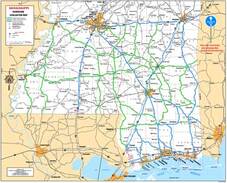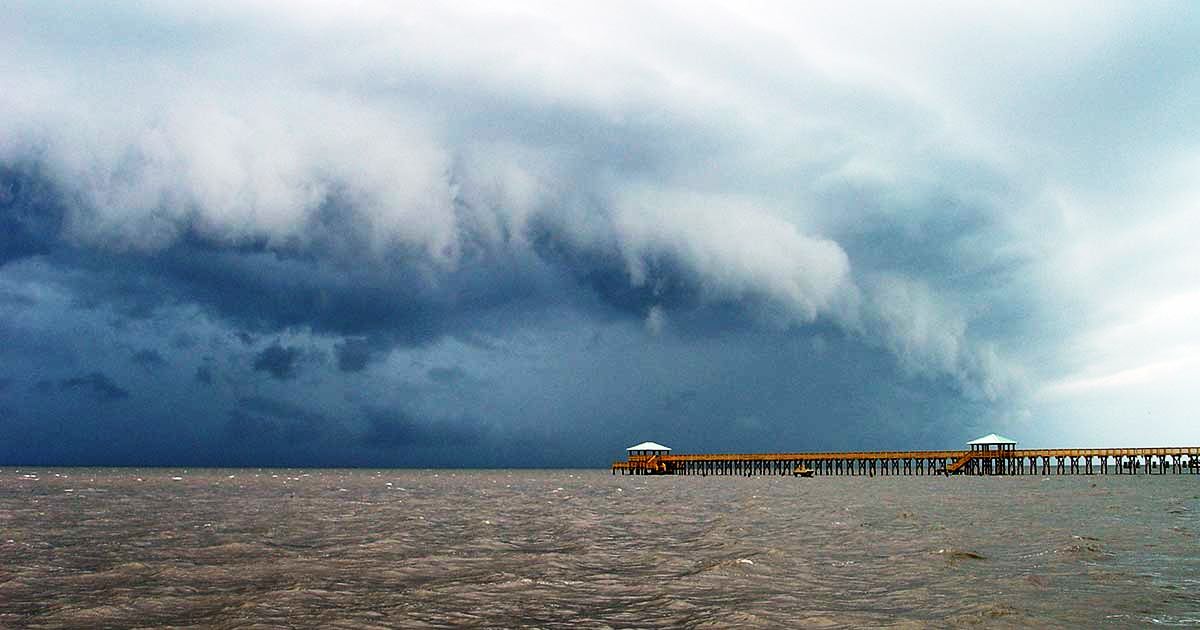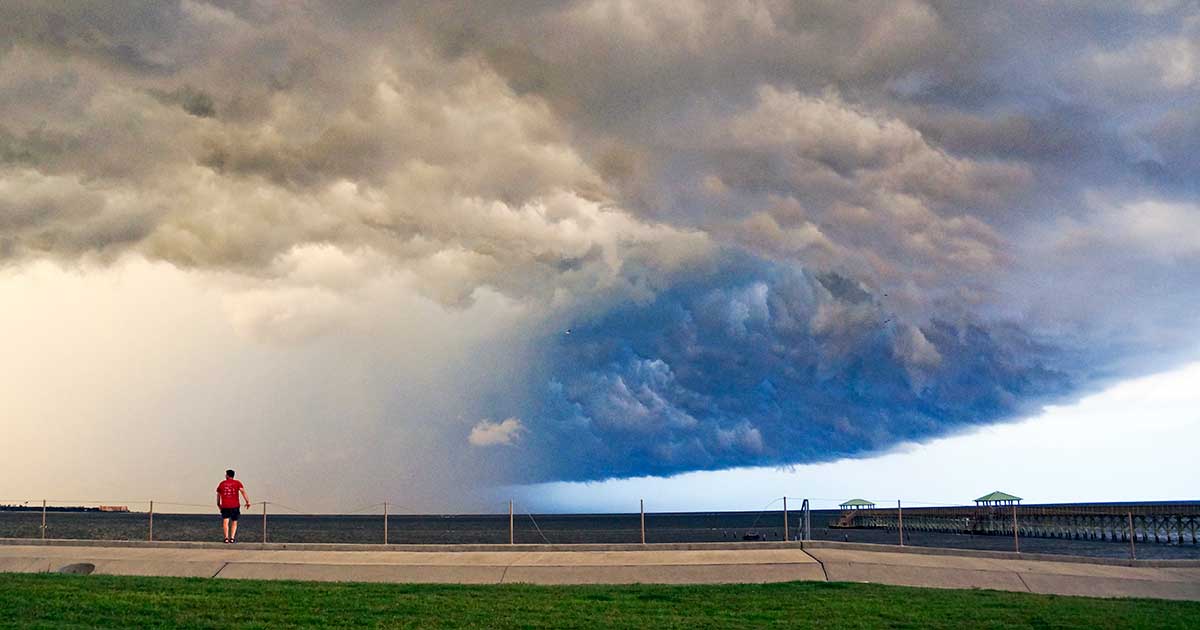Hurricane Preparation Guide and Resources |
|
- by Dena Temple for the Shoofly Magazine
Plan now for the next storm.
The best protection against loss of life and property is planning. If you haven’t already done so, set aside an evening and gather the family around the dining table for some straight talk about storm preparations using our list below.
Storms like Hurricane Katrina teach us one thing: People are more important than possessions. First safeguard yourself and your loved ones; then worry about objects that can’t be replaced; and secure last what can be easily replaced.
There are many additional sources of excellent information about hurricane preparedness. You'll find a number of links at the end of this article; the information is all valid and valuable.
Storms like Hurricane Katrina teach us one thing: People are more important than possessions. First safeguard yourself and your loved ones; then worry about objects that can’t be replaced; and secure last what can be easily replaced.
There are many additional sources of excellent information about hurricane preparedness. You'll find a number of links at the end of this article; the information is all valid and valuable.
There are a number of steps you can take today to make you storm-ready. Here are a few:
- Review your insurance policies. Prepare your home and vehicles according to your policy to avoid claims issues after the storm. If it’s been a while since you have reviewed your home’s insurance, make sure you still have adequate coverage, then review this helpful brochure from the Actuarial Foundation.

- Review local evacuation routes. The Mississippi Department of Transportation (MDOT) offers free printed copies of their hurricane evacuation map, or you can download it here. Once you decide which way you want to go,
- Find a hotel – now. Unless you are staying with friends or relatives, you will need a place to stay. Make a list of at least three hotels in your destination city, and at the first sign of a major storm, start calling for reservations. If you are bringing a pet, be sure to find pet-friendly accommodations. If it turns out you don’t need to evacuate, be sure to cancel any reservations so you aren’t charged for the room.
- Make plans for your pets. Not all pets travel well. If you want to take your pet when you evacuate, take a few short car trips first to acclimate them to travel by car. It will be less stressful for them – and you – if they remain relatively calm when you leave town.
- Assemble a disaster kit. Many of the links at the end of this article include checklists of items you should include in your hurricane supplies. You’re going to need supplies not just to get through the storm but for the aftermath.
- Have enough non-perishable food, water and medicine to last each person in your family a minimum of three days. Electricity and water could be out for at least that long. You’ll need extra cash (see below), a battery-powered radio and flashlights.
- If possible, include a spare (charged) battery for your phone. Also helpful would be a portable crank- or solar-powered USB charger.
- Be sure to include toys and games for the kids – this will surely be a stressful time for them.
- Whether you are evacuating or sheltering in place, it’s crucial to gather your important papers. BSL resident Madeline Ammentorp penned an excellent article that includes an extensive list of documents and photos you should get together before a storm.
- Back up your data regularly. Be sure your desktop computer, laptops, PDAs and smartphones are all backed up to minimize any data loss. Consider cloud storage for your data to ensure your information is safe.
- Purchase a corded phone. If you have a land-line phone and usually use a cordless handset, be sure you have a phone on hand that does not need electricity to operate.
- Gas up ALL your cars. Fill gas cans for your generator too, if you have one.
- Have plenty of cash on hand. When credit card machines are offline, you can still pay with cash. Remember that ATMs work on electricity, so don’t count on getting cash once the storm passes; it may not be possible.
Preparing your home before a major storm
If you are like most Americans, your home is your biggest investment. There are steps you can take to mitigate storm damage – and most of them are common sense and cost little or nothing.
- Secure outdoor belongings. This may seem like a no-brainer, but in an area where so much of our lives are lived outdoors, we have a lot of stuff in our yards – and this stuff can become deadly projectiles when backed by an 85-mile-per-hour wind. Put away grills, trash cans and coolers, lash together patio furniture, and stow small items like bird feeders and planters.
- Trim trees. Removing dead branches and those that overhang your house or other structures can save hundreds or thousands in potential damage. Early in the summer is a great time to take this project on.
- Move boats and cars to higher ground – a friend’s house or a parking lot (be sure to get the owner’s permission).
- Cover your windows. Plywood is an inexpensive window cover but takes some time to install. Metal or plastic storm shutters (metal roll-down shutters are shown above) are more expensive but can save you money on your homeowner’s insurance. Fabric storm panels (below), made from either PVC or Kevlar, can be snapped into place very quickly and easily and also may qualify you for insurance discounts.
- Use sand bags to redirect water. While sand bags will not keep water out, they can be used to redirect low flood water away from doors or other openings. Sand bags should be filled one-half full and stacked one layer at a time, then tamped before moving to the next layer, and they should not be used over three layers high. Use a plastic sheet between the structure and sand bags to keep water from seeping under doors. Keep in mind that once sand bags are exposed to contaminated flood waters, they may pose an environmental hazard and may require special handling.
Some of the above advice can save you money. However, more valuable still is the peace of mind knowing that your family is safe and that you have done what you could to protect what’s most important to you.
Here’s hoping for a quiet hurricane season, y’all.
Some of the above advice can save you money. However, more valuable still is the peace of mind knowing that your family is safe and that you have done what you could to protect what’s most important to you.
Here’s hoping for a quiet hurricane season, y’all.
Helpful Links
Article by BSL resident Madeleine Ammentorp detailing what “important papers” to take if you evacuate
The Actuarial Foundation: “If Disaster Strikes, Will You Be Covered?” (insurance information)
FLASH (Federal Alliance for Safe Homes): Hurricane Safety
FEMA: Family Communication Plan (form)
FEMA: “How to Prepare for a Hurricane”
FEMA: Hurricane Preparedness time line
FEMA: Make a Plan
MEMA “Mississippi Hurricane Preparedness Guide”
MDOT “Hurricane season is here. Are you ready?”
National Hurricane Center
National Hurricane Center’s educational page on storm surge
NOAA/National Weather Service web page, Hurricane Preparedness
Red Cross hurricane preparedness: Before, during and after
Article by BSL resident Madeleine Ammentorp detailing what “important papers” to take if you evacuate
The Actuarial Foundation: “If Disaster Strikes, Will You Be Covered?” (insurance information)
FLASH (Federal Alliance for Safe Homes): Hurricane Safety
FEMA: Family Communication Plan (form)
FEMA: “How to Prepare for a Hurricane”
FEMA: Hurricane Preparedness time line
FEMA: Make a Plan
MEMA “Mississippi Hurricane Preparedness Guide”
MDOT “Hurricane season is here. Are you ready?”
National Hurricane Center
National Hurricane Center’s educational page on storm surge
NOAA/National Weather Service web page, Hurricane Preparedness
Red Cross hurricane preparedness: Before, during and after





























